Even before general manager Don Sweeney made a series of moves that effectively announced that this franchise was “all-in” on making a run at the Stanley Cup this season, it had finally felt like it was a good time to be a Boston Bruins fan again. After three years of attrition, this team is heading into the final quarter of the season as one of the best teams in the East boosted by a crop of talented young players simultaneously breaking into the NHL
All things considered, Sweeney, who was charged with making this team faster and younger, as well as fixing an ugly cap situation when he replaced Peter Chiarelli in April 2015, had every reason to be feeling pretty comfortable with his team’s situation heading into this year’s trade deadline. In the run-up, head coach Bruce Cassidy had taken further pressure off of his GM, suggesting that he wouldn’t want to see any moves that disrupt this lineup’s chemistry and rhythm, echoing comments made by President Cam Neely earlier in the month.
However, somewhere in the back of Sweeney’s mind, he must have had a nagging thought – how much time do these Bruins really have to make another cup run? On Sunday, sandwiched around depth moves that saw Nick Holden, Brian Gionta and Tommy Wingels acquired, he pulled the trigger on a blockbuster trade for Rick Nash, giving up a significant haul – Ryan Spooner, a 2018 first-round pick, blue-line prospect Ryan Lindgren, a 2019 seventh-round pick, and Matt Beleskey. Here’s why, in spite of the price, he absolutely had to do what it took to acquire the market’s top rental winger.
Young Bruins Change Roster Dynamic
Too slow, too predictable and too dependent on costly veterans to fill key depth positions – a list of common criticisms of this franchise that haunted Chiarelli and Claude Julien towards the end of their era. After Stanley Cup success in 2011 and two finals appearances in three years, Boston had fallen behind both in terms of style of play, and makeup of the roster.
Sweeney was tasked with creating greater cap flexibility and restocking the prospect cupboards to create a better flow of young players through the organisation. Consistent with that strategy, when the former defenseman made the decision to move on from Julien in February last year, he chose a coach with a reputation in the organisation for nurturing young talent in Cassidy.
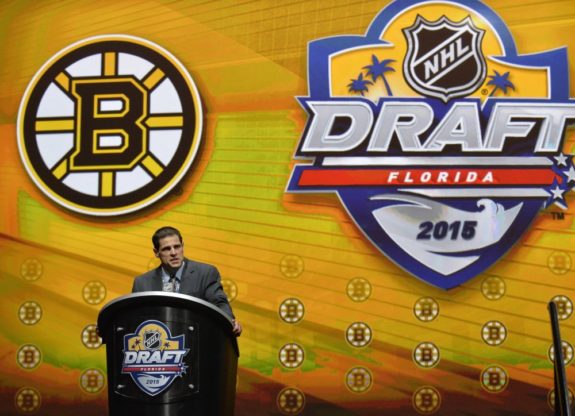
Neither man probably predicted positive results so soon, especially as Boston was left fighting a battle to stay above .500 heading into December, while dealing with a bout of early season injuries.
Charlie McAvoy, Jake DeBrusk, Danton Heinen, Sean Kuraly, Anders Bjork and Matt Grzelcyk have all played pivotal roles as rookies, meanwhile second-year blue-liner Brandon Carlo has held down a regular spot among the top four defensemen. It was a badly needed injection of youth, and those players have made the Bruins a better puck moving team that’s quicker up the ice and they’ve helped to reinvigorate the team’s leadership group.
On the one hand, it’s evidence of the success of the approach taken on by this leadership group, and on the other, it’s effectively cheap roster depth that only lasts as long as an entry-level contract.
Zdeno Chara’s Decline (or departure!)
Boston’s blue-line looks as good as it has for several seasons, and the team will be hoping that they’ve uncovered the next elite defender in McAvoy, who is enjoying an exceptional rookie campaign with 27 points and a plus-23 plus/minus rating.
However, there’s no question that Zdeno Chara is still the integral piece that allows this defensive unit to be one of the league’s best. Possessing incredible reach, size and strength, Chara is one of the NHL’s top shutdown defenders. He may have earned special plaudits recently for the elite level smothering job performed on reigning Art Ross Trophy winner Connor McDavid, but it’s a role that he has taken on all season long.
More carefully managed minutes, reduced power play time, and an overall reduced emphasis on the offensive side of the ice will probably mean that the captain will post his least productive season offensively since joining the Bruins – he has just 17 points through 58 games so far. But those numbers might only be concealing the Slovakian’s real value to this roster. In 2011, when the Cup came back to Beantown, Chara’s accomplices on defense were Dennis Seidenberg, Johnny Boychuk, Andrew Ference, Tomas Kaberle, Adam McQuaid and Shane Hnidy. Not a terrible group, but a long way from being one of the best. It’s a lot easier to build an effective blue line when you have one of the league’s best minute eating defensemen, and that player will have a big impact on this team’s cup window.
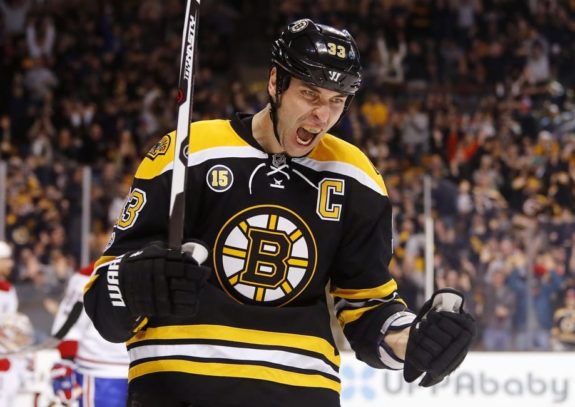
An unrestricted free agent at the end of the season, Chara is still widely expected to return for at least one more year in Boston. Evidence of a gradual decline in his play might be the greater concern for TD Garden’s faithful. Besides this season’s drop off in offense, which has confirmed a regression from regular 40-50 point scorer, to being primarily a defensive defenseman; hockey’s more complex analytics also paint a picture of reduced effectiveness.
Chara’s Corsi numbers – a statistic that aims to quantify how individual players drive possession and shot advantages – reveal a picture of a player who doesn’t generate the same level of positive impact as he did in his prime. Once a reliable positive Relative Corsi % player, Chara finished -12.0% last season, and on a much better team in 2017-18 (which should generate a an improved number), he currently still only sits at -10.4%.
Fortunately for the Bruins, Chara has adapted to the context of his waning powers finding a way to maximise his ability to limit the opposition’s best offensive players, while leading the league’s fourth-best penalty kill in ice time.
Boston’s defense is as well set up as ever to cope with the loss of their 6-foot-9 talisman, McAvoy and Carlo both look like fixtures of future top four groups and Torey Krug is quietly having the best season of his career at 26, while prospects Jakub Zboril and Jeremy Lauzon may soon be looking to emulate the likes of Grzelcyk, who surprised some this season by earning regular minutes.
Sometimes you don’t quite know what you have until it’s gone. It may appear that Boston’s D is set up for 40-year old’s departure or further decline, but how many cracks is he currently papering over? It’s no secret that Carlo’s play has taken a step back after a brilliant rookie season, when he was riding shotgun with Chara. McAvoy’s transition game is the probably the perfect foil for his veteran partner right now, but are there any weaknesses that might surface if he were to see regular ice time with another player? Sweeney needed to take advantage of his captain at a time when he is still a top level impact player.
Boston’s Best Players Are Not that Young
For all the talk of the youthfulness of this Bruins’ roster, even beyond Chara, the core group isn’t actually that young. Long time one-two center punch Patrice Bergeron and David Krejci are 32 and 31 yeard old, respectively, and Krejci’s injury history might make him an “old” 31-year-old. Goaltender Tuukka Rask has managed to reverse his statistical regression this year, but he’ll turn 31 in March. You can throw in 33-year-old David Backes into that mix as well, and scoring leader Brad Marchand will turn 30 during the playoffs. All of those players are locked up to hefty contracts through 2021, winning a cup with this group now could help to ease the frustration of any cap challenges caused by that potential logjam down the road.
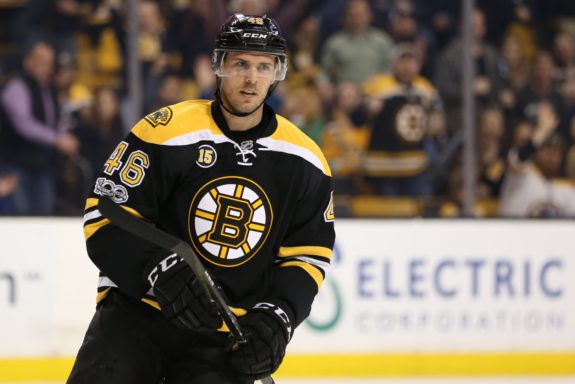
The future of this team may well lie with David Pastrnak up front and McAvoy on the back-end, but rebuilding depth at the center position, finding a fresh shutdown No. 1 defenseman and a championship quality goaltender is no easy task.
If the roster doesn’t quite come together as effectively in 2018-19, or this team takes a couple of significant injuries, then suddenly the cup window for this core could be over and the team will be back to rebuild mode.
Will These Bruins Look as Good in April?
Prior to the Nash trade, a common argument against making a big move was the potential negative impact on team chemistry and this club’s current rhythm.
It’s easy (and dangerous) to view a roster through rose-coloured glasses, especially considering the almost unmatchable run of form Boston has enjoyed since just before Christmas.
Grzelcyk’s recent play has been a major surprise for example, but will he able to emulate that form when the games get that little bit tighter? Recent acquisition Nick Holden has largely been labelled as a depth piece, but he has played significant postseason minutes, he even has five goals in 18 playoff games.
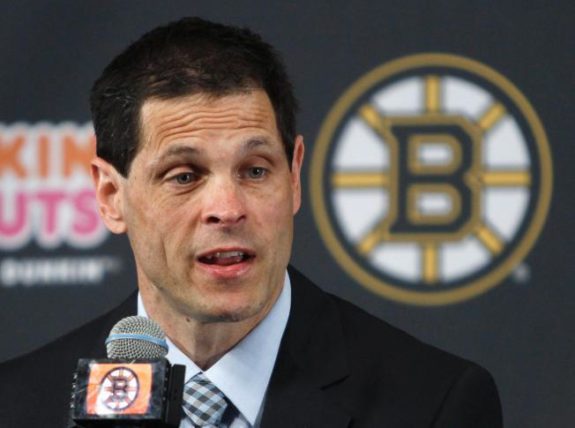
Throw in Carlo’s indifferent form and there could even be incentive at some stage to elevate a shutdown type player – Adam McQuaid or Kevan Miller – to that spot alongside Krug. Flexibility, adaptability and depth in NHL quality are valuable assets in May.
It’s a similar story on the forward lines, where Riley Nash has discovered previously untapped offensive production centering the third unit. Alongside him, rookie Danton Heinen has emerged as a key player, fourth on the team in scoring with 39 points in 55 games, but his offensive output is already slowing with just eight points in his last 17 games.
Newly acquired Rick Nash doesn’t bring any guarantees, and his postseason record is hardly awe inspiring, but he’s a player with a nose for goal-scoring and a pedigree of 434 career tallies.
Ryan Spooner Is a Bust
Ryan Lindgren is a highly promising defensive prospect, and, coupled with Boston’s 2018 first-round pick, there’s no question that Sweeney paid a premium price for his player. Of course, salary had to go back the other way, and pending restricted free agent Ryan Spooner is probably the piece that fans will find hardest to stomach losing.
Describing Spooner as a bust is perhaps a little provocative, but fundamentally, he’s a 26-year old player who has never quite found his place at NHL level. Asked to play wing this season, partly to help balance the lineup, but also due to his own difficulties in nailing down the third-line center position, the 26-year old has flattered to deceive playing on Krejci’s wing, scoring 25 points through 39 games without ever producing truly consistent offense.
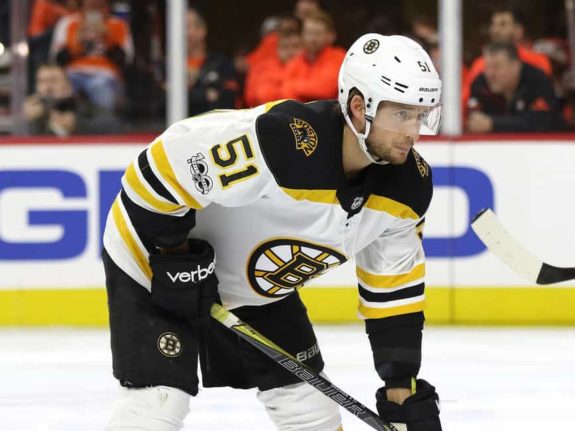
As a one-way player, who has never quite committed himself to being a quality two-way player, Spooner has even earned the ire of the relatively patient Cassidy at times this season. Is he the type of player who steps up and produces in the postseason? Sweeney and the rest of his staff are gambling on the fact that Nash is “that guy,” whereas Spooner is not.
Why the Rick Nash Deal Makes Sense
There are occasions when making your team just a little bit better can make sense, but mostly, the best policy at the NHL trade deadline is to go all in or to hold back. When the Bruins sent a third-round pick and Rob O’Gara to the Rangers in exchange for depth blue liner Nick Holden, it brought back memories of 2016 when the franchise swapped second, third, fourth and fifth round picks in exchange for John-Michael Liles and Lee Stempniak, helpful veterans, but not exactly impact players for a team with bigger holes to fill.
Stanley Cups are hard to win, and, of course, no trade guarantees anything, especially considering moves made by other clubs, most notably Atlantic division rival Tampa Bay picking up Ryan McDonagh. Still if a GM believes they’ve got a roster that has an opportunity, it’s their job to make the deals that enhance it.
It would have been easy for Sweeney to stick to his mandate of keeping the roster young, holding onto prospects and continuing to build through the draft. He might have even been forgiven for being a little gun shy considering that arguably over aggression and undervaluing of younger assets and draft picks ultimately proved to be his predecessor’s undoing. After taking the gamble, he can only watch what now happens on the ice knowing that the quality of his moves will be judged by what happens next.